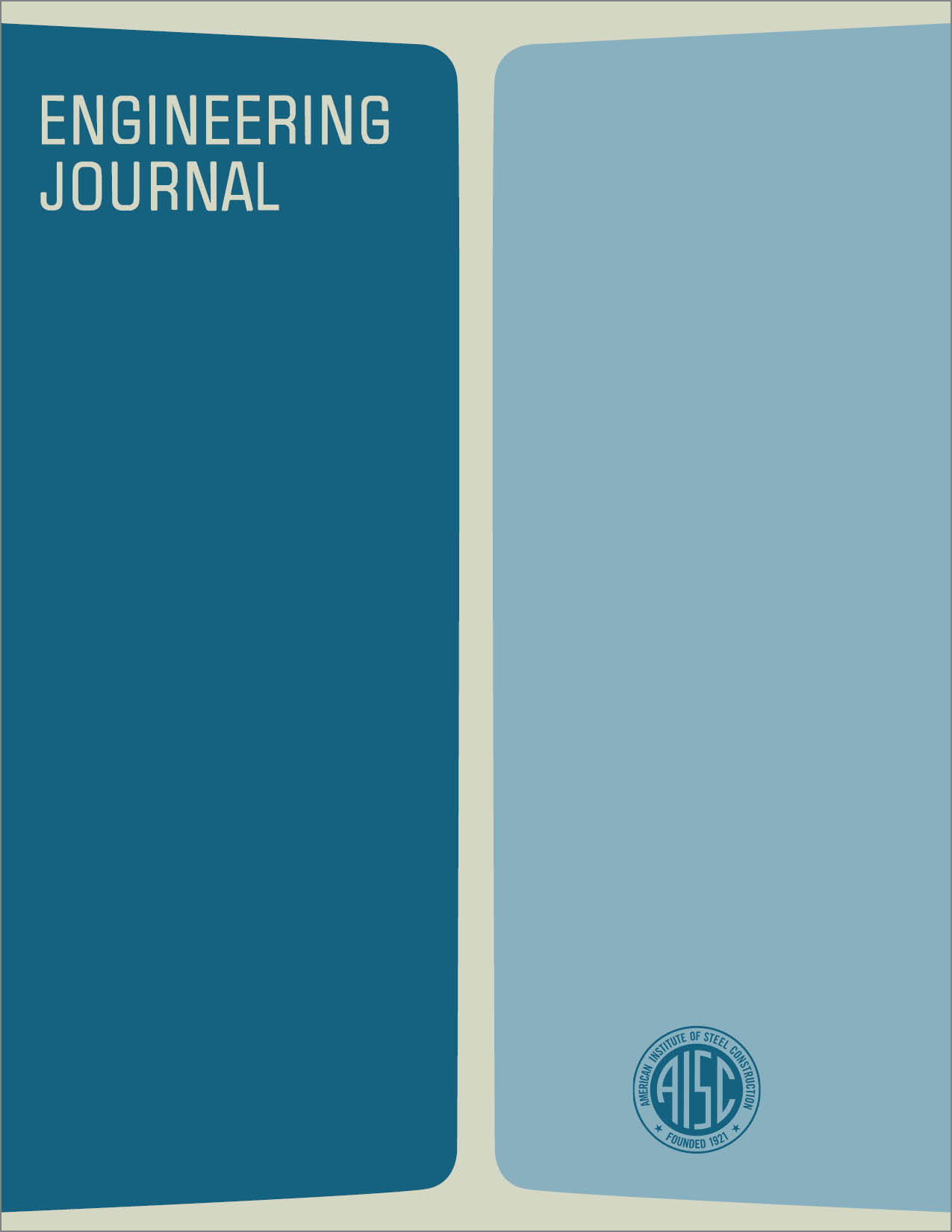Effective Length of Columns with Intermediate Axial Load
DOI:
https://doi.org/10.62913/engj.v9i4.194Abstract
The effective length factor K for columns loaded at ends with various end conditions can be determined easily using the method outlined in Section 1.8 of Reference 2. There are some cases of column design in which there is an axial load at an intermediate point between ends in addition to load at the ends. An example of this type is the column of a two-story building with floor beams at an intermediate floor level framed to the column flanges and no beams framing to the web. The column is free to buckle in the weak direction at the intermediate level. Similarly a column supporting a crane runway in an industrial building falls into this category if orientation of column is such that it can buckle in the y-direction at the crane runway level. The crane load is the intermediate load in this case. To use the full length of the column as the actual unbraced length and multiply by the K factor determined from Table C1.8.1 or Fig. 1.8.2, AISC Manual of Steel Construction, is conservative. However, some economy can be achieved by using a modified effective length factor. Consider the pin ended column loaded as in Fig. 1. The column is free to buckle about its weak axis and is in a state of unstable equilibrium. If the stability equation is derived by solving the differential equations of the deflection curves for the upper portion and lower portion of column separately, taking into account compatibility at the intermediate load point.

